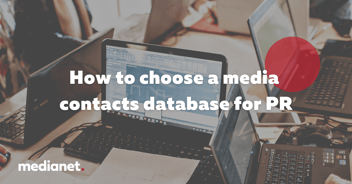Help at hand: 5 expert tips for building strong media relationships

Medianet’s 2024 Media Landscape Report highlighted a fundamental principle for anyone working with the media: be the easiest person that a journalist works with. This should be your primary goal, whether or not your pitch results in immediate coverage.
Here are five tried and tested methods for building strong relationships with the media that will last years, if not decades, into the future.
Build a deep understanding of the media
To successfully build relationships with journalists, you must develop an in-depth understanding of the media. Most journalists will receive hundreds of emails every day, so tailoring your pitch or media release to the right contacts is essential.
Before you send your email, you should ask yourself some important questions, such as:
“Is this best for an editor or a reporter to see?”
“Which media outlet is most relevant for my ideal clients?”
“Are these journalists interested in this topic?”
“What formatting and style do they use?”
“Do any of these outlets require additional media assets with a pitch?”
“When is this journalist on deadline?”
“What questions will the journalist likely have, and can I answer them before they have to ask?”
These questions will help you refine your pitch by ensuring it gets in front of the right people, rather than as many people as possible.
Over time, this approach will also help you to build and nurture a relationship with journalists, as they will know that a pitch from you is well-considered and thoughtfully tailored to the way they like to work.
Respect journalists’ time
Respect for a journalist's time is paramount. If you waste their time with irrelevant pitches or stories that lack newsworthiness, you'll likely find your emails in the virtual trash can.
Sending a new business pitch to AFR senior business writers during financial results season? Don’t expect a reply any time soon. How about Friday at 4pm? There’s little chance your story will see the light of day.
If you have a timely story that needs to be published on a particular day, make sure you give the journalist enough lead time to prep, fact check and edit the story. This can differ from outlet to outlet, but for most publications, they’ll need at least a couple of days to prepare.
Be the most helpful person you can be - even if it doesn't lead to instant wins
If you can be the most helpful person a journalist deals with, you're more likely to get what you want out of the relationship. The key is to be the most proactive, value-adding professional that journalists interact with, fostering a relationship that extends beyond a single pitch. Even if your story doesn't make it into the news cycle, leaving a positive impression keeps the door open for future pitches.
If a journalist contact reaches out for a particular story and you don’t have a spokesperson for that specific topic within your client base, it’s still best practice to help them as much as possible. Look into your networks and wider contacts to do some digging to find somebody who would be useful for them.
Take their communication preferences into account
I see media call-outs on X or LinkedIn almost every day of the week. But even if they’re writing the callout on social media, the journalist's preference is usually to receive an email in response, rather than pitching them on the social channel itself.
In general, email is still the preferred method to receive pitches above text messages, phone calls, social DMs, or WhatsApp. If in doubt, ask the journalist what their preferences are, or search Medianet, which will often show the journalist’s communication preferences on their profile.
Know when to skip the pitch and take the paid approach
If you’re struggling to connect with journalists and achieve earned media coverage, or you have an interesting story that isn’t necessarily newsworthy, then paid media coverage could be a useful avenue to explore.
A word of caution: if a journalist’s responsiveness and interest in your story seems too good to be true, that’s probably because it is. Some unethical media outlets intentionally fail to disclose that they will run your story for a fee until the last moment.
If you do choose to go down the paid route, make sure your story is created to the same high standards as earned media. The paid aspect simply gives you more influence over where and when it runs and whether it can include a call to action or a link.
With paid media as part of your overall strategy, you can save your earned approach for the stories that journalists want to write – and help build an even stronger relationship based on the mutual desire for a great yarn. Because ultimately, that’s what strong media relationships are all about: telling great stories.
About the author:
Phoebe Netto is the founder of Pure Public Relations, a PR firm started 14 years ago that focuses on outcomes, not output – it’s pure and simple. Pure Public Relations offers media relations, issues management and communication services, and has a reputation for securing excellent media coverage and an impressive track record for issues management.
purepublicrelations.com.au





